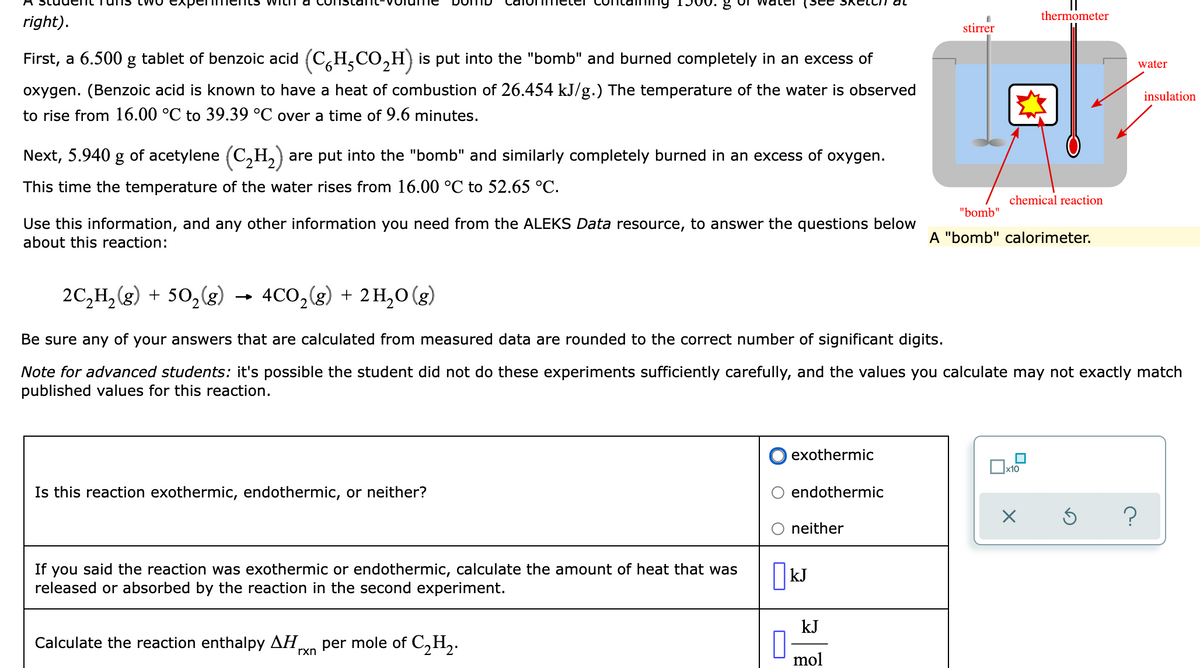A student Tuns twoexpermemts WitIT a Constant volume DOID CaloImeter CoTmta ng T1J00. g ur vwater (see SKettn at thermometer right). stirrer First, a 6.500 g tablet of benzoic acid (C,H,CO,H) is put into the "bomb" and burned completely in an excess of wate oxygen. (Benzoic acid is known to have a heat of combustion of 26.454 kJ/g.) The temperature of the water is observed ins to rise from 16.00 °C to 39.39 °C over a time of 9.6 minutes. Next, 5.940 g of acetylene (C,H,) are put into the "bomb" and similarly completely burned in an excess of oxygen. This time the temperature of the water rises from 16.00 °C to 52.65 °C. chemical reaction "bomb" Use this information, and any other information you need from the ALEKS Data resource, to answer the questions below about this reaction: A "bomb" calorimeter. 2C,H, (g) + 50,(g) → 4CO,(g) + 2H,0 (g) Be sure any of your answers that are calculated from measured data are rounded to the correct number of significant digits. Note for advanced students: it's possible the student did not do these experiments sufficiently carefully, and the values you calculate may not exactly ma published values for this reaction. O exothermic Oxto Is this reaction exothermic, endothermic, or neither? O endothermic O neither If you said the reaction was exothermic or endothermic, calculate the amount of heat that was released or absorbed by the reaction in the second experiment. kJ Calculate the reaction enthalpy AH per mole of C,H,. rxn
Thermochemistry
Thermochemistry can be considered as a branch of thermodynamics that deals with the connections between warmth, work, and various types of energy, formed because of different synthetic and actual cycles. Thermochemistry describes the energy changes that occur as a result of reactions or chemical changes in a substance.
Exergonic Reaction
The term exergonic is derived from the Greek word in which ‘ergon’ means work and exergonic means ‘work outside’. Exergonic reactions releases work energy. Exergonic reactions are different from exothermic reactions, the one that releases only heat energy during the course of the reaction. So, exothermic reaction is one type of exergonic reaction. Exergonic reaction releases work energy in different forms like heat, light or sound. For example, a glow stick releases light making that an exergonic reaction and not an exothermic reaction since no heat is released. Even endothermic reactions at very high temperature are exergonic.

Step by step
Solved in 3 steps with 3 images









